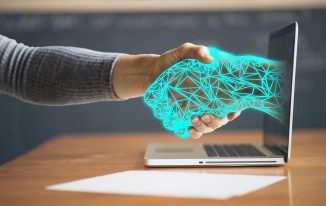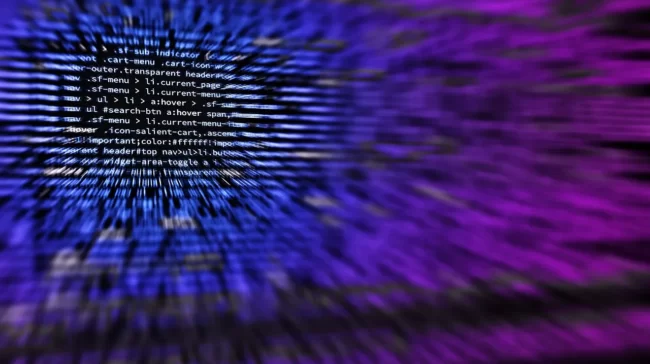
When we talk about Artificial intelligence, the first thing that comes to mind is humanoid robots, which are undoubtedly a significant part of AI processed with Machine Learning.
Let us understand first what robotics all is about- A machine which is a collaboration of engineering, Machine learning, computer science, and other technologies is said to be robots, that is also the substitute of human effort (up to some extent). Artificial Intelligence (AI) is responsible for making the Robot/Machine competent in performing tasks with the help of machine learning algorithms. ML algorithms not only assist in performing tasks but also allow the machine to learn from previous data.
Today, many industries and production factories rely on robots to simplify tasks and to make the most of human efforts. Artificial intelligence and Robotics are a powerful combination for automating repetitive tasks. Robotics has a strong potential to solve a wide range of problems. Robots can handle a lot of dangerous things, and their learning ability is outstanding.
Robotics in Industrial Sectors
1.The industry that needs the assembly is aircraft production, where the AI’s assembly application can enable robots to handle complex manufacturing. Additionally, robots can learn the best way to perform a particular task with the help of an AI application in no time.
2. Packaging Industry- The Packaging Industry needs robotics heavily because packing is repetitive, and it is possible to save a large amount of time and valuable muscle power by using robotics for packaging. Robots can figure out the best way to do it with fewer efforts, and with AI, they can figure out how to do it in less time, less cost, and with manageable resources. AI can continuously correct the motion of the robots, making moving, shifting, packing, installing, and any other related motions easier.
3. Painting Sector- Painting involves a lot of harmful chemicals to deal with, which are used while making different times of paint. Here Robotics proves successful since this job required consistency over a large area of paint. It will help in saving a great deal of human health, less wastage, more efficiency, and a lot of time.
4. Welding Process- Let us take the example of the car manufacturing sector, which requires a lot of welding, which is a tedious task to perform every car has several numbers of welds. Robots can provide more finished products and with lesser challenges.
5. Customer Service Automation- As we all know that this industry has made all of us wait a lot. If we apply robotics over here well processed with AI natural language processing ability, it will be a great success. Robots have proven to be successful while interacting with customers in the services at- hotels, retail stores, etc. The more they learn, the more they will move towards perfection.
6. Food Industry-Robotic can be soon seen in kitchens too in the big restaurants. The food industry is such a vast industry, robotics can do wonders and that too with very little human involvement. Automated machines which can also be called robots will be able to prepare meals for masses or can be used in a home kitchen too. The best example here could be food festivals. The robotic chef can be controlled via a smartphone, and once the director chooses a recipe and assembles tubs of cut and prepared components, the robot will be able to cook the programmed dish professionally taking the amount of time set in the machine, but not more than that. Here another superb example is the self-preparing Pizza machine, where consumers just need to select the flavor and cheese amount and the machine will do the rest, it is also called a Pizza vending Machine. Going forward a user-friendly version of a robot pantry might also include a built-in smart dishwasher and refrigerator. This way not only cooking jobs but other kitchen-related jobs can be easily accessed by Robotic.
Artificial intelligence and Machine Learning in Robotics
Below listed are the areas where ML and AI support robotics to ensure it processes impactfully to make current applications more inexpensive and profitable. The possibility of AI and ML in robotics includes:
1. Data – As discussed in the above pointers as well, Robotics is not successful without the correct programming and algorithms, which is provided by AI and ML. With the help of which Robots can process in the required manner, makes decisions and ML algorithms not only help in processing data but also help the robots in self-learning from that data for future decisions.
2. Vision – Just like humans recognize things with the help of vision, ML and Ai train the robot to detect the objects and humans. In addition to recognizing objects, robots help humans detect other details that humans might not be able to see.
3. Motion Control – While discussing above the industries where robots proved successful, so ML and AI are responsible for making the robot control their movements. All the movements are controlled by machine learning, like picking up the object and dropping it in the correct location.
4. Alarming Situation Detection – Here, we are talking about multi-tasking robots. Safety should always be taken for granted when many industries update their technology. Well-trained Robots are also able to detect alarming situations like- fire, bad weather, and intimate before depending upon the situation.
Although Artificial intelligence and Machine Learning both are at the initial stage regarding Robotics, they are already solving a lot many issues in the industries. The impacts are such that the expected future is full of possibilities. AI-supported applications have already been a part of both homes and workplaces. Each sector must develop a great understanding of advanced Artificial Intelligence techniques and their capabilities.
Here would like some light on how Robots can detect things. Sensor Devices are the prime and foremost thing – where can we find sensors in our daily lives? In the lifts, metro trains, etc. Ever wondered while standing on the liftgate, does it not close? Because the sensors indicate that the machine is in use and that somebody is there. Or that something is going on at the spot where the sensors are. It is the whole idea of the sensor to indicate.
These days smart sensors are being used, which have greater functionality than the old traditional sensors. Sensors can also get implanted into the human body through a surgical procedure. Or can be worn on clothes or while at work. One of the best examples for this is: while shopping in the mall, each item of clothing gets fixed to sensors, so it cannot get stolen.
Sensor-equipped products can track, as they can connect to the internet, and can also successfully by integrating into the IoT (Internet of Things).
Final Words– The scope of AI, ML, and Robotics is skyrocketing; predictors predict that there will be a time when most of the human physical efforts will be shed down and replaced by machines (Robots). We are already in an era where technology is enhanced drastically. Many industries have already started to optimize their workflows and use human efforts more persuasively. This blog gives a comprehensive overview of how robotics will apply to business and how they can get trained by machine learning and artificial intelligence to perform different tasks most efficiently.







